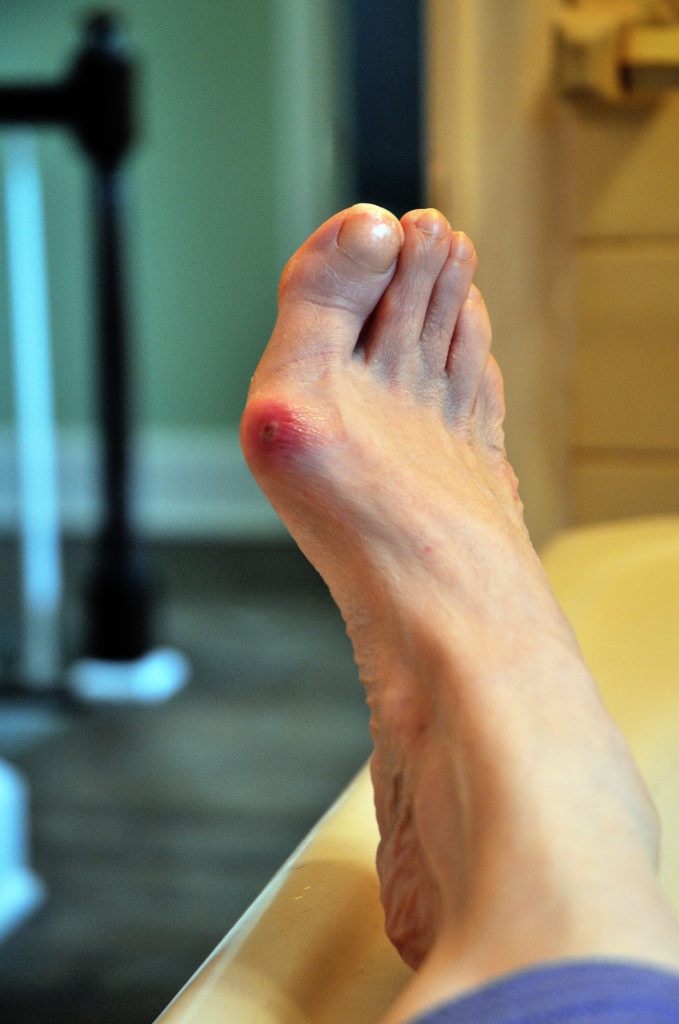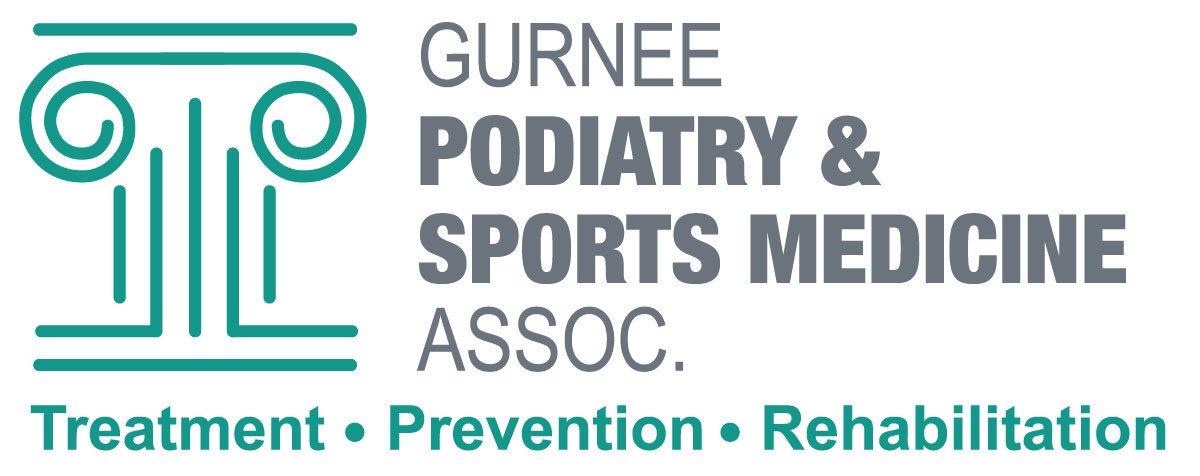What Happens If You Let a Bunion Go Untreated?
Bunions are a common issue that we see in our clinic. They begin as a minor irritation but can eventually become very painful and uncomfortable in tight or ill-fitting shoes. Bunions are the most common foot condition, with 25%-33% of adults — over 5 million people in the United States — experiencing them annually. Because of this, you will find effective treatments are well-established, all the more reason to seek treatment rather than delay.
What Is a Bunion?

A bunion (hallux valgus) forms on the outside joint of your big toe. The metatarsophalangeal (MTP) joint will angle outward from the foot, pulling the big toe inward towards the 2nd toe. This forces the metatarsal bone to protrude on the inside of the foot because the bone moves out of alignment, causing inflammation, pain, redness, and a bony bump. It is often irritated further by wearing high heels or tight shoes. This foot deformity is common even in some children, but most often, they progress and cause pain and issues as we age, but patients at any age can experience discomfort. Eventually, the big toe will move toward the smaller toes, which causes a painful joint protrusion.
What Causes a Bunion?
Bunions are caused by numerous things, including genetics, structural abnormalities, wearing improper shoes, and pregnancy.
- Genetics: People who are genetically predisposed to bunions have flat feet or loose ligaments in the feet.
- Structural abnormalities: Those with Morton’s toe (a misshapen short metatarsal bone), leg asymmetry, or flat arches are especially prone to bunions. Foot injuries involving the big toe can also impact foot structure, resulting in bunion development.
- Wearing improper shoes: The largest contributor to bunion pain is pointed-toe shoes. When the foot is forced into an unnatural position — further exacerbated by pressure added with heels — the result is tightened calf muscles, increased weight borne by the front of the foot, and a collapsed arch. Shoes are the primary reason bunions are so common in women.
- Pregnancy: Due to the increased amount of the hormone relaxin found in the body during pregnancy, cartilage softens, and ligaments loosen in the foot. This can contribute to pregnancy-induced bunions.
Signs of a Bunion
The signs of a bunion are easy to identify and shouldn’t be ignored. They include the following:
- A bony protrusion of the big toe joint on the inside of your foot.
- Pain, inflammation, and redness around the big toe joint.
- Moving the big toe is difficult.
- Sporadic pain in the big toe joint.
- Calluses form in between your toes.
Bunion Treatments
Over-the-counter treatments, such as cushions or splints, can alleviate symptoms. Corticosteroid injections, icing the joint, wide-toed shoes, activity modification, and orthotics will slow or stop the progression. Without the use of orthotics, bunions can worsen over time. The only complete cure for bunions requires surgery. If left untreated, long-term complications can develop.
There are myths about bunion surgery that prevent many from pursuing this option until their situation becomes severe. Maybe they heard that surgery is painful and that bunions come back after surgery. Perhaps they fear having to use crutches and taking time off from work. But, unfortunately, bunions do not go away on their own. Contrary to the rumors, bunion surgery is done regularly for our patients and is done in an outpatient setting, and patients go home with pain medications and a surgical shoe or boot, typically walking with out a crutch, to return weekly for dressing changes. Some pain is to be expected, but the medications work well and are typically only used for 1-3 days for most patients.
When Should I Get Bunion Surgery?
A bunionectomy is the only permanent solution to a bunion. When you visit a board-certified podiatrist, such as Dr. Schoene or Dr. Bever, they will recommend surgery when they see the following issues:
- Pain is impacting your quality of life.
- Wearing shoes is painful.
- Orthotics are not helping.
- Bunion pain is consistent.
- Over-the-counter anti-inflammatory medications are not providing sufficient relief.
There is a 20% chance of bunion recurrence after surgery. However, most bunion recurrences are minor and don’t impact daily activities. In some instances, they may require additional surgery, which is uncommon. This can be caused by incomplete correction during the first surgery; the patient didn’t follow post-operative instructions, or surgery creating an overcorrection.
What Happens if a Bunion Goes Untreated?
Since bunions are a progressive condition, untreated bunions will continue to cause more issues as they develop further. This includes pain, impaired foot function, foot and ankle issues, and body pain. More specifically, it can lead to additional medical conditions that will require treatment, such as the following:
- Gait imbalance can impact the ability to stand or walk.
- Misalignment of the gait can lead to pain in the legs, lower back, and hips.
- Corns, bursitis, hammertoe, crossover toe, and osteoarthritis are frequent developments in correlation to an untreated bunion.
- Corns: Thickened calluses develop between the toes.
- Bursitis: An inflammation of the fluid-filled sacs that protect the hip joints. This can result in infection.
- Hammertoe (metatarsalgia): A bone inflammation in the ball of the foot. The result is overcompensation on the metatarsal bones of the foot, causing an abnormal bend in the middle of the toe joint. This may lead to hammertoe surgery in addition to bunion surgery.
- Crossover toe: This occurs when the second toe crosses over the big toe, damaging the ligaments supporting the toe and causing an imbalance. The result is toe dislocation.
- Osteoarthritis: Develops when the cartilage protecting the big toe joint deteriorates.
If conservative care is not relieving the discomfort of the bunions, then surgery is the next step in the process to rectify the alignment issue and relieve the pain. The inability to stand and walk impacts one’s quality of life. It isn’t something to tolerate or dismiss. In fact, it is very serious. Assuming that it will correct itself may lead to long-term injury and possibly permanent bodily damage.
Schedule an Appointment
If you suspect that you are dealing with a bunion, we encourage you to schedule an appointment on our website to have your condition reviewed by Dr. Schoene or Dr. Bever at your earliest convenience.
